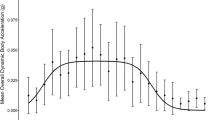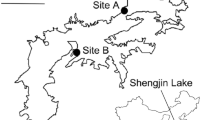Abstract
One way for animals to decrease energy expenditures is to minimize the cost of movement. For animals dwelling on slopes, gravity can impart a large energetic cost to movement. For this reason, animals traveling aboveground alter their movement patterns in response to the steepness of terrain (specifically hillslope angle) so as to minimize their energetic costs. Subterranean animals should also benefit from choosing optimum movement paths in relation to hillslopes but concurrently must factor the cost of excavation into their movement decisions. In cases where the excavation costs are much higher than the costs of working against gravity, excavation costs may override the consideration of gravitational costs and movement of subterranean animals may be independent of hillslope angle. To determine the response of a subterranean animal to hillslope angle, we excavated tunnels in the burrow systems of 19 pocket gophers in southern California that occupied hillslopes ranging from 2 to 30°. At each excavation we measured several characteristics of burrow geometry and used these data in a model of pocket gopher energetics to calculate the cost of tunnel construction at the various hillslope angles. We found that the cost of tunnel construction was independent of hillslope angle, and that the costs of shearing soil and pushing soil horizontally through the tunnels were 3 orders of magnitude greater than the costs of lifting the soil against the force of gravity. Accordingly, pocket gopher foraging tunnels were oriented independently of the hillslope. The decoupling of the movement patterns of subterranean animals from the effects of gravity is a distinctive feature of the subterranean habit compared to the movement of aboveground animals. Because of the important effects of tunnel construction on soil processes, this unique biological feature of subterranean animals has implications for basic physical processes, such as soil erosion. We found that the rate of soil flux generated by pocket gopher activity was invariant to hillslope. This relationship is in contrast to the most common model of soil movement generated by purely physical processes.
Similar content being viewed by others
Author information
Authors and Affiliations
Additional information
Received: 25 October 1999 / Accepted: 13 April 2000
Rights and permissions
About this article
Cite this article
Seabloom, E., Reichman, O. & Gabet, E. The effect of hillslope angle on pocket gopher (Thomomys bottae) burrow geometry. Oecologia 125, 26–34 (2000). https://doi.org/10.1007/PL00008888
Published:
Issue Date:
DOI: https://doi.org/10.1007/PL00008888




